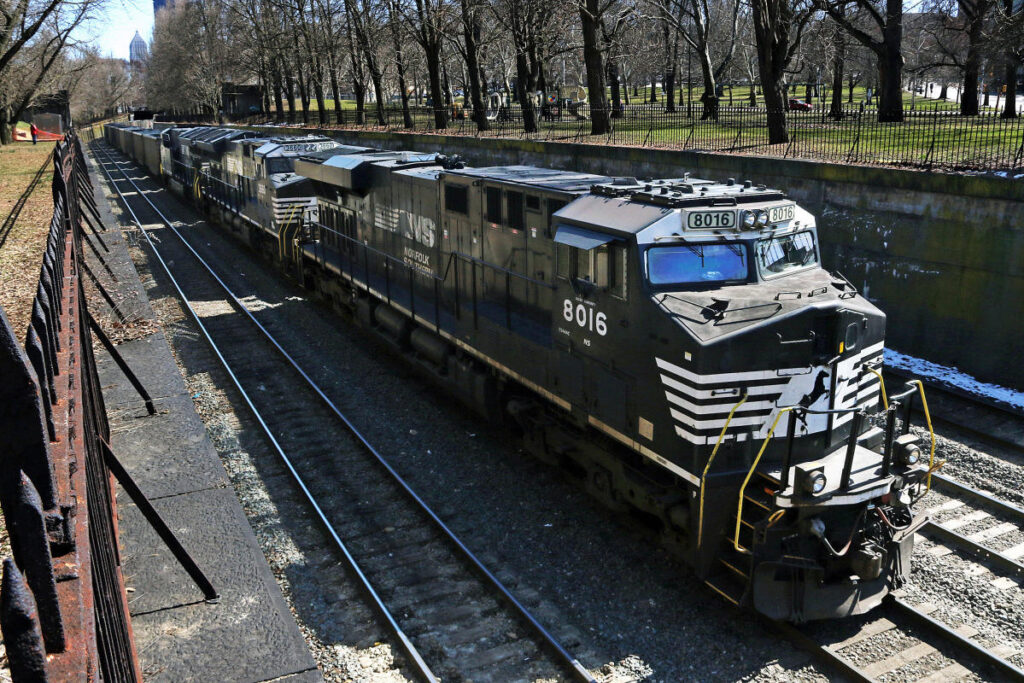The federal government has announced a substantial allocation of $2.4 billion in grants aimed at enhancing railway infrastructure across the United States, with a significant portion designated for smaller railroads. This funding, announced by the Federal Railroad Administration, will support 122 distinct projects throughout 41 states and Washington, D.C. The majority of these grants are earmarked for critical upgrades to tracks and bridges, although some funds will also be directed toward improving training initiatives and exploring environmentally friendly alternatives to the long-standing reliance on diesel-powered locomotives. The strategic dissemination of these funds underscores the government’s commitment to modernizing railway infrastructure and improving operational efficiencies.
Much of the allocated funding is derived from the infrastructure law championed by President Joe Biden in 2021, which represents a broader initiative to revitalize American infrastructure. Last year, a similar grant program issued $1.4 billion for rail-related projects, emphasizing the government’s ongoing focus on enhancing rail systems. Transportation Secretary Pete Buttigieg highlighted the significance of these investments, stating that they would contribute to robust supply chains, improved passenger rail accessibility, and enhanced freight safety and efficiency. Among the pressing concerns addressed by these grants is rail safety, particularly in light of the heightened scrutiny following a hazardous train derailment in East Palestine, Ohio, in February 2023.
The largest single grant awarded is valued at $215 million, designated for replacing a vital bridge over the Hudson River essential to Amtrak services. This project highlights the collaborative effort between state and federal agencies, with New York State contributing 60% of the overall project cost, amounting to $634.8 million. The new infrastructure will enable simultaneous crossings by trains and pedestrians, replacing an old bridge that has been in service since 1901. Such upgrades are indicative of the pressing need to modernize aging railway infrastructure to meet current and future transportation demands.
Other significant projects funded include nearly $160 million earmarked for consolidating railway tracks in Springfield, Illinois, to facilitate a faster rail connection between Chicago and St. Louis. Additional grants aim to enhance track resilience in Southern California, with up to $100 million allocated to bolster Amtrak’s lines against climate-related threats. Notably, the innovative development of hydrogen-powered locomotives, backed by a $48 million grant, signifies a potential transformative step in reducing greenhouse gas emissions in the railroad sector.
Further expanding on the funding distribution, substantial investments are made for infrastructure improvements such as a $67 million grant for the expansion of an intermodal railyard in Michigan, where containers are transitioned between rail and truck transport. In Milwaukee, nearly $73 million will support enhancements to the Muskego railyard. However, the lion’s share of the funding, amounting to nearly $1.3 billion, is directed toward 81 projects specifically targeting smaller “short line” railroads. These funds are envisioned to bolster efficiency and service capabilities for these vital components of the rail industry.
Industry leaders, such as Chuck Baker, president of the American Short Line and Regional Railroad Association, have expressed confidence that these grants will meaningfully benefit smaller railroads, linking rural towns to broader markets and enhancing overall service. The strategic focus on modernizing the rail infrastructure not only promotes economic growth and connectivity but also addresses pressing environmental and safety concerns, establishing a sustainable and efficient foundation for the future of rail transport in America. As the grants roll out, it is clear that the federal government’s commitment to revitalizing the rail industry is poised to yield significant benefits for both the economy and the environment.

